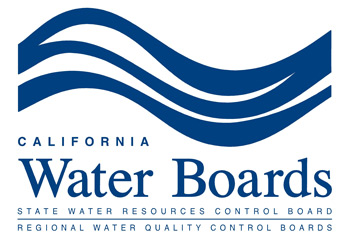Framework for updating Sacramento/Delta flow requirements also released
July 8, 2018 - SACRAMENTO – Following nine years of research and extensive public outreach, the State Water Resources Control Board today released a final draft plan to increase water flows through the Lower San Joaquin River and its tributaries —the Stanislaus, Tuolumne and Merced rivers—to prevent an ecological crisis, including the total collapse of fisheries.
—the Stanislaus, Tuolumne and Merced rivers—to prevent an ecological crisis, including the total collapse of fisheries.
“The San Francisco Bay-Delta is an ecosystem in crisis. The Board’s challenge is to balance multiple valuable uses of water—for fish and wildlife, agriculture, urban, recreation, and other uses,” said State Water Board Chair Felicia Marcus. “Californians want a healthy environment, healthy agriculture, and healthy communities, not one at the expense of the others. That requires the water wars to yield to collective efforts to help fish and wildlife through voluntary action, which the proposed plan seeks to reward.”
Release of the third and final draft of the Bay-Delta Water Quality Control Plan update for the Lower San Joaquin River and Southern Delta, and an accompanying Substitute Environmental Document, follows a nine-year process during which the Board studied and analyzed options, conducted extensive public outreach, including public hearings in the area, and reviewed more than 1,400 comment letters. The Board will begin consideration of the final draft plan in August.
The State Water Board also announced further progress on its effort to update flow requirements for the Sacramento River, its tributaries, and the Delta and its tributaries, including the Calaveras, Cosumnes and Mokelumne rivers. This update is at an earlier stage procedurally than the Lower San Joaquin River/Southern Delta plan update; a draft proposed plan and staff report analyzing alternatives will be released later this year for public review and comment.
The two Bay-Delta Plan updates are aimed at addressing an ecological crisis in the Delta and preventing further collapse of Bay-Delta fisheries. A dramatic decline in the populations of native fish species that migrate through and inhabit the Delta has brought some species to the brink of extinction. Approximately 70,000 fall-run Chinook salmon adults returned to the San Joaquin Basin in 1984. The number of returning adults dropped to approximately 40,000 in 2010 and again to 8,000 returning adults in 2014.
While multiple factors are to blame for the decline, the magnitude of diversions out of the Sacramento, San Joaquin, and other rivers feeding into the Bay-Delta is a major factor in the ecosystem decline.
The draft final Lower San Joaquin River/Southern Delta update includes improved instream flows February through June, which are the critical months for protecting migrating fish on the Stanislaus, Tuolumne and Merced rivers. These flows are measured as a percentage of “unimpaired flow,” the amount of water that would come down the river if there were no dams or other diversions.
A 40 percent of unimpaired flow requirement, within a range of 30 to 50 percent, is proposed as an appropriate balance for this plan update because it can improve conditions for fish and wildlife considerably without more challenging impacts on other water users. Currently, flows remaining in the rivers can run as low as 10 to 20 percent of unimpaired flow at critical times of the year and range from 21 to 40 percent on average for the three tributaries.
The unimpaired flow requirement is not intended to be a rigid and fixed percent of flow. The proposal provides for and encourages collaboration to use the flows as a block of water or “water budget” that can be allocated to “shape” or shift flows in time to better achieve ecological functions such as increased habitat, more optimal temperatures, or migration cues.
The draft plan recognizes that other “non-flow” factors, such as habitat loss, predation and pollution, affect survival rates of fish and other species. The plan would allow reduced river flows if stakeholders step up to pursue non-flow measures to improve conditions for fish and wildlife. Negotiations for voluntary agreements are taking place between stakeholders and the California Natural Resources Agency and its departments.
The draft final update also includes a revision of the salinity standard for the southern Delta. Maintaining an adequate amount of fresh water in the southern Delta is critical to protecting agriculture in the region. The year-round salinity standard in the draft final update increases slightly from the current seasonal standards, based on salinity tolerance studies of sensitive crops.
After consideration of public input, the draft text of the Proposed Final Amendments was modified. Those revisions can be found in Appendix K of the Draft Final Substitute Environmental Document here. The State Water Board is accepting written comments on those changes until 12 p.m. (noon) on Friday, July 27, 2018. The public notice and instructions for submitting comments on the revisions can be found here.
A summary of the modifications and discussion of the changes can also be found in Volume 3, Master Response 2.1, Amendments to the Water Quality Control Plan here. Board consideration of the Bay-Delta Water Quality Control Plan Update for the Lower San Joaquin River and Southern Delta will begin in August.
Source: CA. Water Boards
State Water Board Seeks Public Comment on Final Draft Bay-Delta Plan Update for the Lower San Joaquin River and Southern Delta
- Details








